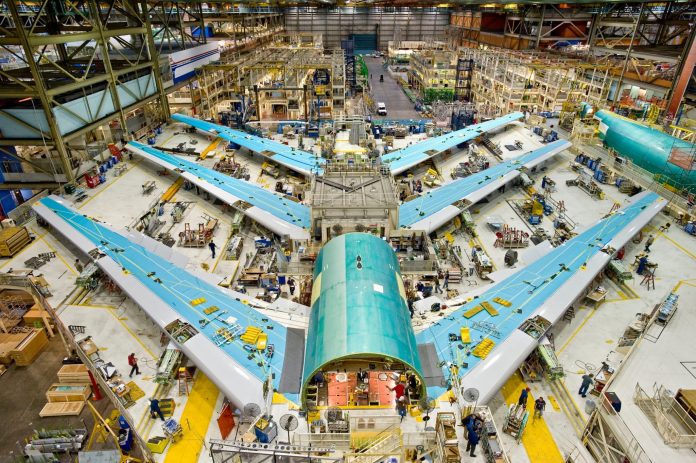Ultra reliability and low latency of 5G a major enabler of factory automation, robotics and other industrial use cases
With the right technological stack in place, manufacturers could eventually operate what’s called a “lights-out” facility wherein factory automation solutions–think smart, connected robots–could supplant the need for manual labor. While that concept is still some way off, manufacturers are eager to use 5G and the internet of things to digitally transform their operations. But, as a speaker from Robert Bosch GmbH said last week at the Brooklyn 5G Summit, international standards-setting body 3GPP needs to do more work around the industrial automation aspects of the 5G New Radio (NR) standard.
According Signals Research Group CEO Michael Thelander, who attended the Brooklyn 5G Summit, Andreas Mueller of Bosch said “3GPP isn’t doing enough to address the industry use cases.” In his analysis of the event, Thelander pointed out that while virtual 5G network slices are seen as a key enabler of industrial connectivity, “Interestingly Bosch isn’t expecting instantaneous network slices. Instead, the company thinks 10 minutes is adequate and that human intervention will be required for years to come.”
Then there’s the aspect of a private network. Right now LTE technology MulteFire, which uses unlicensed 5 GHz spectrum, is seen as a promising access protocol for private networks, particularly those geared toward IoT use cases. The same premise of a private network carries over to 5G, but is further complicated by network slicing, which could essentially create a virtual private network owned and controlled by an operator but sold as a service to a manufacturer.
“The problem with owning the network,” Thelander wrote, “is that the operator owns the spectrum and Bosch doesn’t have the expertise required to run a 5G network. Then again, no one at this time has the expertise to manage a 5G network that must meet extremely stringent performance requirements–ultra high reliability and very low latency.”
Setting the standards for factory automation
To the idea that 3GPP isn’t adequately addressing the needs of manufacturing interests, Thelander–an active observer of 3GPP plenary and other meetings–did some research looking at the type of companies that contribute to the standardization consortium. Using attendance records for 3GPP RAN plenary meetings, and meetings of the Service and System Aspects group, Thelander found representation from “vertical market” interests at 11% as compared to telco-related interests for 2017 meetings of the Service and System Aspects group. For the RAN meetings, vertical market attendance fluctuated between 4% and 8%, according to the research.
Regardless of the influencing factor or factors, the technical specifications of 5G for use in vertically-specific use cases like factory automation are important and, to some extent, require more focus. To fill in this perceived gap, major industrial and telecom players announced at the recent Hannover Messe event the formation of the 5G Alliance for Connected Industries and Automation (5G-ACIA). The group’s mission is, according to its website, to facilitate “the best possible applicability of 5G technology and 5G networks for the manufacturing and process industries by addressing, discussing and evaluating relevant technical, regulatory and business aspects.”
5G-ACIA members include manufacturers Bosch, Mitsubishi, Siemens, TRUMPF and Yokogawa, and wireless ecosystems players Nokia, Huawei, NXP and Deutsche Telekom. Check out this in-depth Q&A with TRUMPF Digital Transformation Officer Ulrich Faisst to learn how the German manufacturer of machine tools and laser technologies, among other products, is approaching digital transformation.
Ulrich Dropmann, head of Nokia’s standardization activities, wrote in an April 27 bog post that, during the 5G standardization process “many players from the industrial domain have not been engaged in relevant telecom standardization processes in the past and vice versa…A common language and understanding of relevant aspects is established by unifying the ecosystem. Likewise, industry-specific requirements need to be planned.”
Industrial applications of 5G will cover a variety of use cases, Dropmann wrote, and the network requirements of specific applications will reflect that variability. “The industrial domain is diverse and heterogeneous…Major areas, such as discrete manufacturing, actually may differ significantly from others, such as the process industry. Not only with respect to quality-of-service requirements, but also regarding typical deployment scenarios. In general, however, all relevant application areas have in common that a new generation of industrial connectivity solutions may lead to substantial improvements and optimizations.”
Mueller, of Bosch, who called out the need for concurrency between industrial and telecom around 5G standardization at the Brooklyn 5G Summit, is the chairman of 5G-ACIA. He said in a statement, “5G will become the central nervous system of the factory of the future and will have a disruptive impact on industrial production. For the first time, the 5G-ACIA brings together all the major players worldwide. This enables us to work in a concerted and targeted manner to ensure that the interests of the industry are taken into account accordingly. “

